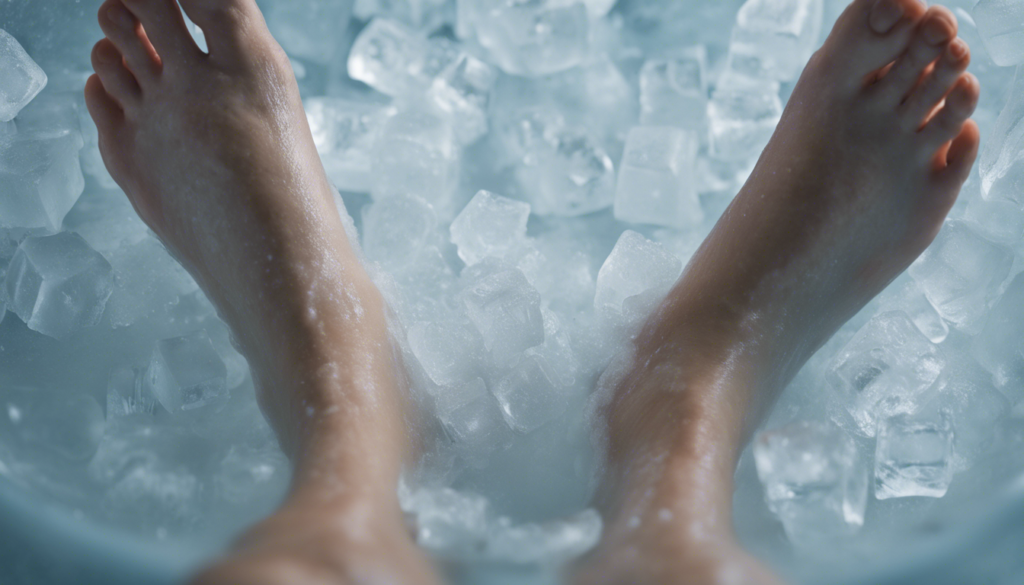In recent years, the wellness community has increasingly embraced the practice of taking ice baths. From professional athletes to wellness enthusiasts, many swear by the benefits of immersing themselves in icy waters. But is it truly beneficial, and can it be done at home? In this comprehensive guide, we will explore the use of an ice bath tub at home for wellness, examining its benefits, how to safely practice it, and how you can set up your own ice bath tub at home.
Introduction to Ice Bath Tubs
Ice bath tubs, also known as cold plunge tubs, are designed for the purpose of immersing the body in cold water for a specific period. This practice, known as cold water immersion (CWI), has been used for centuries as a recovery and health strategy.
Benefits of Using an Ice Bath Tub

- Reduced Muscle Soreness
- Explanation: After intense workouts, muscles can become sore due to inflammation. Ice baths help reduce this soreness by constricting blood vessels and reducing metabolic activity.
- Enhanced Recovery
- Explanation: Cold water immersion helps flush out metabolic waste from the body while simultaneously delivering nutrients to help muscles recover faster.
- Improved Circulation
- Explanation: Alternating between cold and warm water can improve circulation by stimulating blood flow. This process helps to deliver more oxygen and nutrients to tissues.
- Boosted Immune System
- Explanation: Regular exposure to cold water can increase the count of white blood cells, thereby boosting the immune system.
- Mental Health Benefits
- Explanation: Cold water immersion can help reduce symptoms of depression and anxiety by triggering the release of endorphins, the body’s natural “feel-good” chemicals.
How to Safely Use an Ice Bath Tub at Home
- Preparation
- Step 1: Choose a suitable ice bath tub that fits your size and space. Ensure it’s durable and capable of holding ice and water.
- Step 2: Fill the tub with cold water and add ice. The water temperature should ideally be between 50-59°F (10-15°C).
- Duration
- Guideline: Stay in the ice bath for no longer than 10-15 minutes. Start with shorter durations if you’re new to the practice and gradually increase the time as your body adapts.
- Safety Measures
- Monitor Temperature: Use a thermometer to ensure the water temperature stays within the safe range.
- Stay Hydrated: Drink water before and after your ice bath to stay hydrated.
- Listen to Your Body: If you feel uncomfortable or experience pain, exit the bath immediately.
Setting Up Your Ice Bath Tub at Home

- Choosing the Right Tub
- Opt for a sturdy tub that can accommodate enough ice and water. Inflatable tubs or converted freezers can work well for home setups.
- Location
- Place your tub in a location where water spillage can be easily managed, such as a bathroom or outdoor area.
- Ice Supply
- Ensure you have a reliable supply of ice. You might need to store bags of ice in your freezer or purchase from a local store.
Integrating Ice Baths into Your Wellness Routine
- Post-Workout Routine
- Use ice baths as part of your post-workout recovery to help reduce muscle soreness and accelerate healing.
- Mental Health Practices
- Incorporate ice baths into your routine to help alleviate stress and improve your overall mental well-being.
- Contrast Therapy
- Alternate between hot and cold water immersion to maximize the benefits of improved circulation and recovery.
Potential Risks and Considerations
- Hypothermia
- Avoid staying in the ice bath for too long to prevent a dangerous drop in body temperature.
- Cardiovascular Risks
- Individuals with cardiovascular issues should consult their doctor before starting ice baths, as the cold water can increase heart rate and blood pressure.
- Proper Supervision
- Always have someone nearby when taking an ice bath to ensure safety in case of an emergency.
Conclusion
The use of an ice bath tub at home can offer numerous wellness benefits, from reducing muscle soreness and enhancing recovery to improving mental health and boosting the immune system. By following the proper guidelines and safety measures, you can integrate this practice into your wellness routine effectively. If you’re new to ice baths, start slowly and listen to your body’s responses. Always consult a healthcare professional if you have any underlying health conditions.
Invite readers to leave a comment: Have you tried an ice bath tub at home? Share your experience and tips in the comments below!


